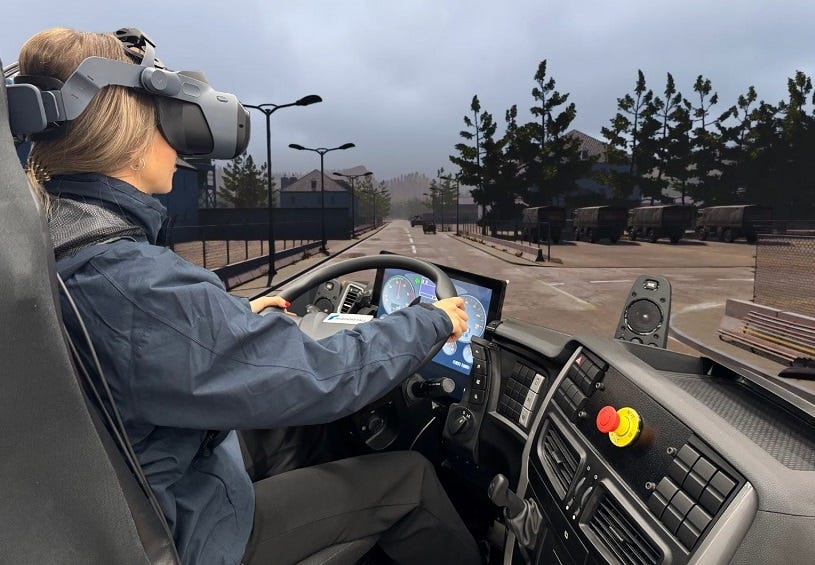Rheinmetall and VR-maker Varjo team up to build low-cost, easy-to-deploy training simulators
Düsseldorf-based Rheinmetall and Helsinki-based Varjo are turning mixed reality from a lab curiosity into a practical tool for NATO land forces.
The two companies announced that Varjo’s XR-4 Series headsets will be integrated into Rheinmetall’s deployable virtual land training systems. The goal is to train more drivers and crews, in more places, without waiting for time on a large fixed simulator or spending cash on a new simulator location.
European armies are growing their fleets and standing up new units faster than their traditional training infrastructure can absorb, and while full mission simulators in permanent buildings are excellent, they are scarce, often booked, and difficult to scale. Rheinmetall’s answer has been modular, mobile simulators that can be moved and reconfigured in the field. Varjo’s role is to give those systems a higher level of visual and cognitive realism without adding the bulk of a dome or large projection system.
“Nations need to strengthen their defense capabilities faster than ever before, and training is at the heart of that mission,” said Bartek Panasewicz, a VP at Rheinmetall Electronics. “Mixed reality gives us the flexibility to train large numbers of soldiers where they are needed, without compromising on the quality or realism of the experience.”
With the new solution, crews sit in real seats, touch real controls, and work with actual instrument layouts. The XR-4 headsets then overlay high-resolution, three-dimensional virtual terrain and threats around them. That blend of physical hardware with a synthetic outside world lets instructors run full operational lanes without needing a huge projection cave or wraparound screens.
“Mixed reality provides a new edge for land training, accelerating preparedness at a fraction of the cost compared to traditional training methods,” said Valentin Storz, CRO at Varjo. “By combining Rheinmetall’s high-fidelity simulators and our XR technology, forces can train with speed, mobility, and realism that matches today’s operational demands.”
Rheinmetall’s training portfolio already includes mobile driving trainers that can be packed, transported, and set up away from major bases. Cockpit inserts can be swapped in minutes to mimic different platforms, from trucks to armored vehicles. The Varjo integration adds a mixed reality layer on top of that physical base.
Varjo’s VR system isn’t standard gaming fare. It has full eye and hand tracking and supports a wide and detailed field of view that reduces warping and improves pixel density. There are also multiple passthrough cameras that allow the trainee to see and feel the controls in real time.
On the analytics side, instructors can see where trainees are actually looking at in training, allowing for real-time feedback. Instructors can replay a run and see not only where the vehicle went, but what the trainee was focused on at key moments.
This partnership lands at a time when NATO members are pushing hard to grow forces and replenish stocks, while also dealing with budget limits and a shortage of experienced instructors. Mobile, data-rich simulators that can move with the units give staff officers another tool to keep readiness levels rising without pulling units away from their main tasks for long periods.
Rheinmetall and Varjo will bring a joint demonstration to I/ITSEC in Orlando on December 1 to 4, 2025. The centerpiece will be an XR truck driving simulator that shows how the XR-4 integrated system can support high throughput training in a compact footprint.


